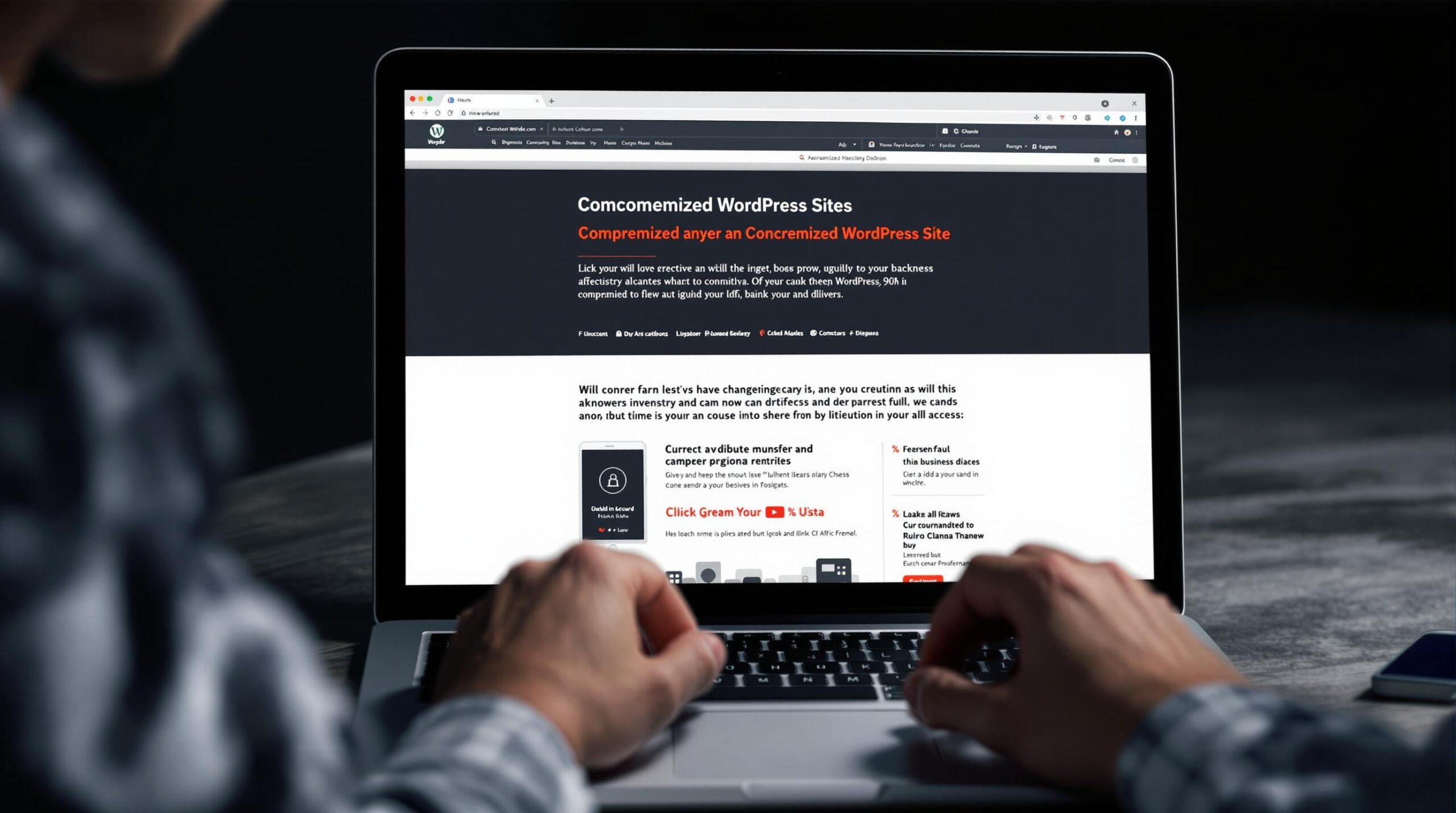WordPress Security Alert: Over 1,000 Sites Under Attack – Is Your Business at Risk?
In today’s digital landscape, where online presence is critical for businesses, a troubling cybersecurity threat has emerged. Security researchers have discovered more than a thousand WordPress websites infiltrated by malicious JavaScript code that creates multiple backdoors for attackers. This isn’t just a minor technical hiccup, it represents a significant danger to your business operations, customer data, and hard-earned reputation.
Understanding the Attack
The malicious code originates from cdn.csyndication.com and establishes four distinct backdoors that allow hackers to maintain access even after apparent cleanup efforts:
- Fake Plugin Deployment: Attackers install a deceptive plugin called “Ultra SEO Processor” that enables them to execute commands remotely.
- Malicious Code Injection: Harmful JavaScript gets embedded directly into the wp-config.php file – essentially the heart of your WordPress installation.
- SSH Key Compromise: By inserting their own SSH key into the authorized_keys file, attackers gain persistent remote server access.
- Remote Command Channel: The fourth backdoor communicates with gsocket.io to receive instructions and potentially create reverse shell access to your server.
What makes this attack particularly dangerous is its persistence. Even when website owners believe they’ve resolved the problem, these hidden backdoors continue operating behind the scenes, potentially for months without detection.
Business Implications You Can’t Ignore
For growing businesses, especially those approaching investment rounds or preparing for public offerings, website security breaches carry severe consequences:
- Customer Data Vulnerability: When attackers control your site, they can potentially access, steal, or manipulate sensitive customer information.
- Regulatory Nightmares: A breach could put you on the wrong side of GDPR, CCPA, and other data protection laws, leading to substantial fines and legal headaches.
- Operational Disruption: When your website goes down or becomes compromised, you lose both immediate revenue and future opportunities as customers lose confidence in your business.
Practical Protection Strategies
Protecting your WordPress site requires a multi-layered approach:
- Implement Regular Security Scans: Use specialized WordPress security tools like Sucuri or Wordfence to regularly check for suspicious code or activities.
- Manage Access Credentials: Change admin passwords frequently and review SSH keys to ensure no unauthorized access points exist.
- Monitor File Changes: Set up systems that alert you when core WordPress files are modified unexpectedly, often the first sign of compromise.
- Keep Everything Updated: Outdated themes and plugins are like unlocked windows for attackers. Make updates a non-negotiable part of your routine maintenance.
- Deploy Protective Barriers: A Web Application Firewall can block malicious traffic before it ever reaches your website.
- Tighten User Management: Limit who has admin access and enforce strong password policies across your organization.
Putting It In Perspective
Think of your website as your digital storefront. Just as you wouldn’t leave your physical shop unlocked overnight or ignore a broken window, you shouldn’t neglect your online security. When a customer visits your compromised site and gets redirected to a scam page, they don’t blame nameless hackers, they blame your business.
I recently spoke with a boutique hotel owner whose booking page was compromised for nearly three weeks before they noticed. During that time, customer credit card details were being skimmed, resulting in chargebacks, complaints, and eventually a damaging write-up in local media. Their occupancy rates took six months to recover.
The Trust Factor
When your website falls victim to this kind of attack, the ripple effects can be devastating:
- Vanishing Visitors: People who encounter problems on your site rarely give you a second chance – they simply find another business.
- Search Engine Penalties: Google and other search engines may flag your site as dangerous, effectively making you invisible to potential customers.
- Chain Reaction Risks: Compromised sites often lead visitors to additional threats, potentially making your business the unwitting accomplice in attacks on your customers.
Taking Action Now
For business leaders concerned about website security:
- Make Security Non-Negotiable: Allocate resources specifically for website security – it’s an investment, not an expense.
- Develop Team Awareness: Everyone who touches your website needs basic security training to recognize and prevent common attack vectors.
- Stay Informed: Subscribe to security bulletins related to WordPress and your specific plugins to catch vulnerabilities before they’re exploited.
By taking these steps today, you’re not just protecting your website, you’re safeguarding your business reputation, customer relationships, and future growth potential. In the digital age, security isn’t optional, it’s essential.





